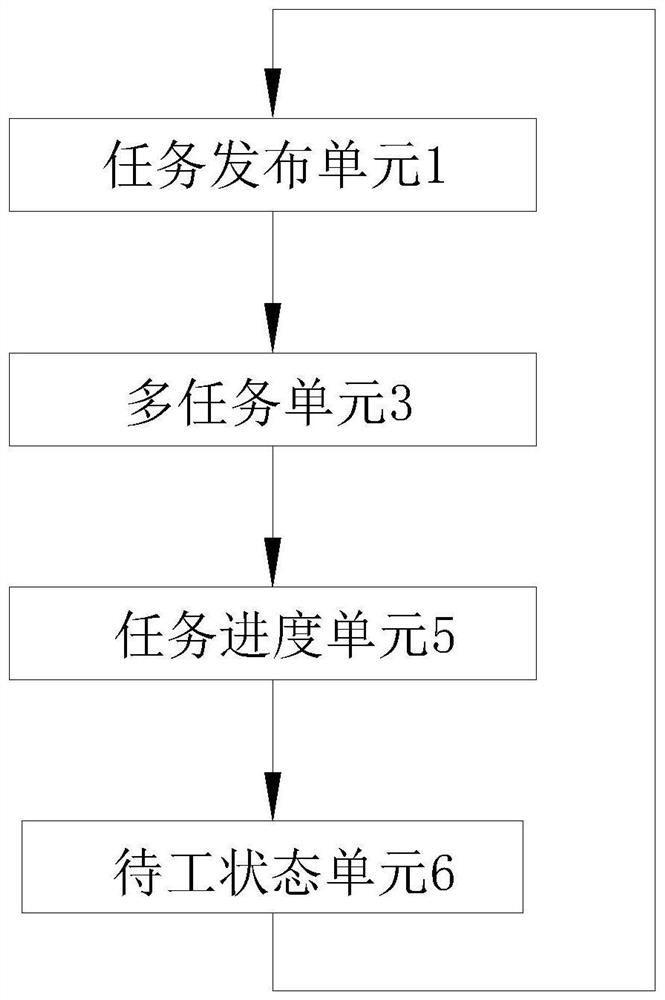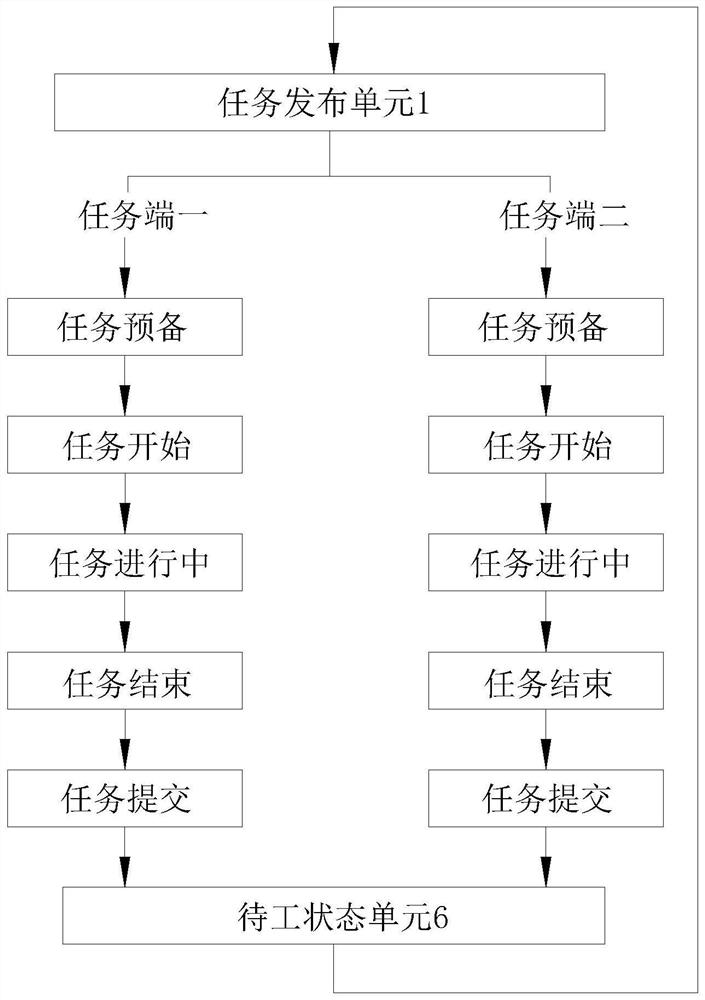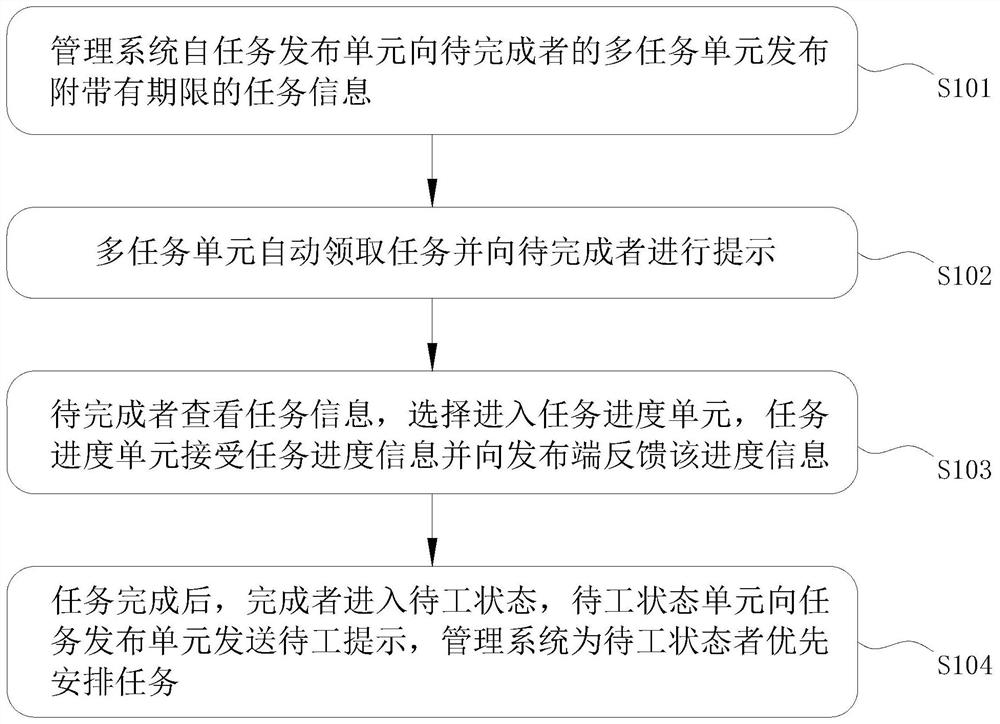Automatic task receiving system and method based on big data
A big data and task technology, applied in data processing applications, instruments, calculations, etc., can solve problems such as large restrictions on task executors, delays in task progress, and work panic, so as to improve work enthusiasm, avoid unclear explanations, and improve work efficiency. efficiency effect
- Summary
- Abstract
- Description
- Claims
- Application Information
AI Technical Summary
Problems solved by technology
Method used
Image
Examples
Embodiment 1
[0077] refer to Figure 1 to Figure 2 , an automatic task collection system based on big data, including,
[0078] Task release unit 1, the release end releases task information with a time limit to task release unit 1, and the task information includes task type, task content, content explanation, task requirements, related notes, guidance, completion path, and tasks involved in the completion process. Department name, contact information of relevant personnel, operation instructions and precautions of the equipment, the task issuing unit 1 is connected to the multi-tasking unit 3, and releases the received tasks to the multi-tasking unit 3;
[0079] A multi-task unit 3, the multi-task unit 3 automatically receives tasks and issues prompt information at the receiving end, and the multi-task unit 3 is connected to the task progress unit 5;
[0080] A task progress unit 5, the task progress unit 5 is used to accept the task progress information and feed back the progress infor...
Embodiment 2
[0089] refer to Figure 4 The difference between the present embodiment and the first embodiment is only that a task prompting unit 2 is added in this implementation, and the multitasking unit 3 is connected with the task prompting unit 2, and whether the task prompting unit 2 monitors whether the receiving end of the multitasking unit 3 automatically receives a new Task, if there is a new task, start the task prompt unit 2 to give corresponding prompts, so that the task-to-be-processed person can receive the task information in time and complete the task within the corresponding time limit.
Embodiment 3
[0091] refer to Figure 5 , the difference between the present embodiment and the second embodiment is only that a return unit 4 is added in this implementation, and the multi-task unit 3 is connected with a return unit 4. If the person to be executed thinks that the task cannot be completed, the task is unreasonable, or the task is issued incorrectly, the return is started. Unit 4 returns the task to the sending end, wherein the return unit 4 is provided with a remark part, and the person to be executed must set a return remark to explain the reason for the return as information feedback; the waiting state unit 6 monitors all task ends and tasks at the task end Entering the return unit 4 is determined as the disappearance of the task, the task progress unit 5 is in any part of task preparation, task start, and task progress, then it is determined as the task in progress, and the task progress unit 5 is in the task end or task submission, then it is determined It is determined...
PUM
 Login to View More
Login to View More Abstract
Description
Claims
Application Information
 Login to View More
Login to View More - Generate Ideas
- Intellectual Property
- Life Sciences
- Materials
- Tech Scout
- Unparalleled Data Quality
- Higher Quality Content
- 60% Fewer Hallucinations
Browse by: Latest US Patents, China's latest patents, Technical Efficacy Thesaurus, Application Domain, Technology Topic, Popular Technical Reports.
© 2025 PatSnap. All rights reserved.Legal|Privacy policy|Modern Slavery Act Transparency Statement|Sitemap|About US| Contact US: help@patsnap.com



